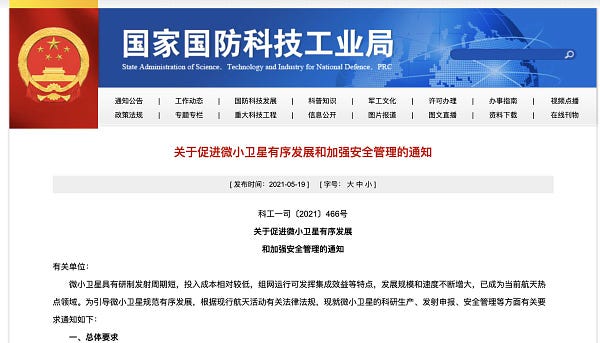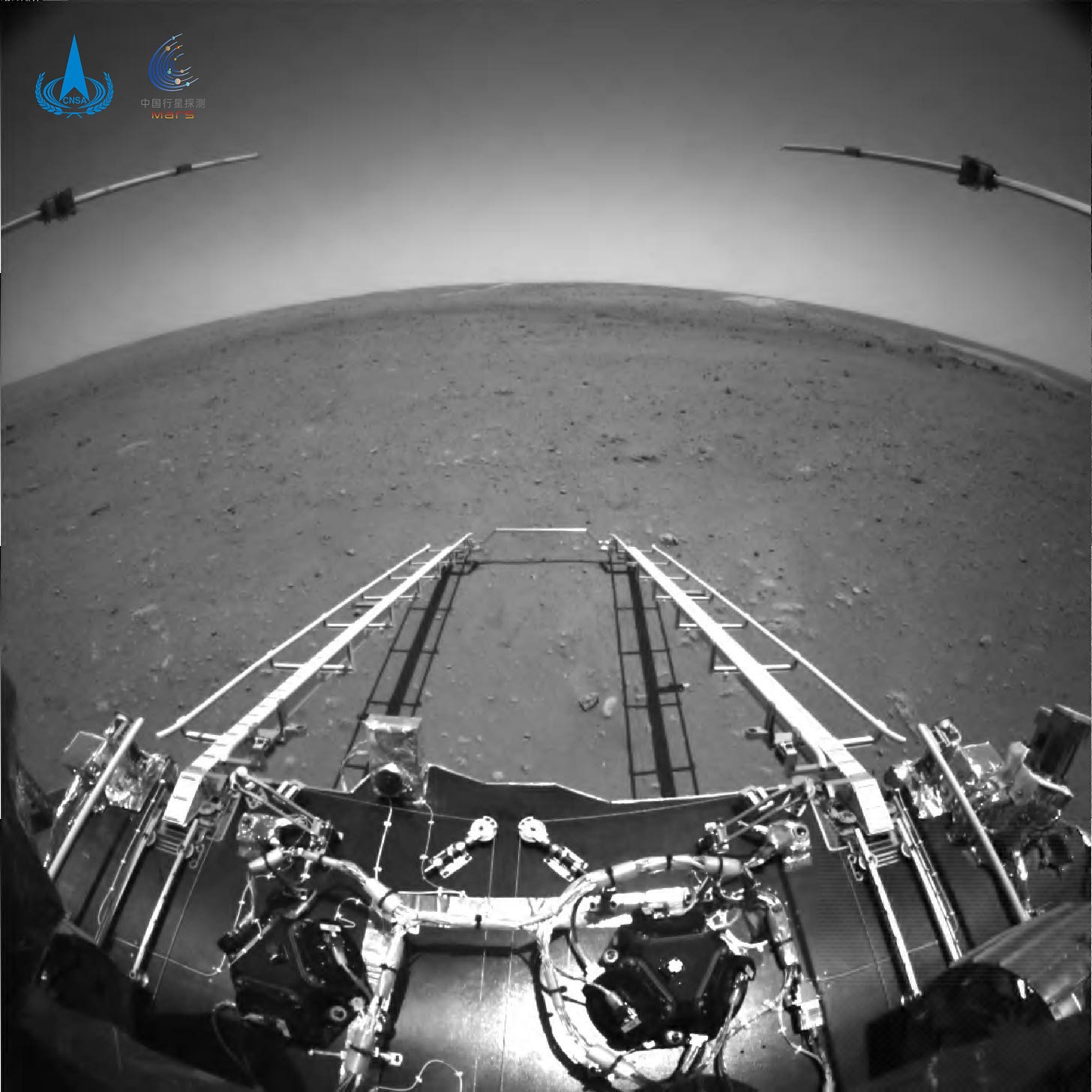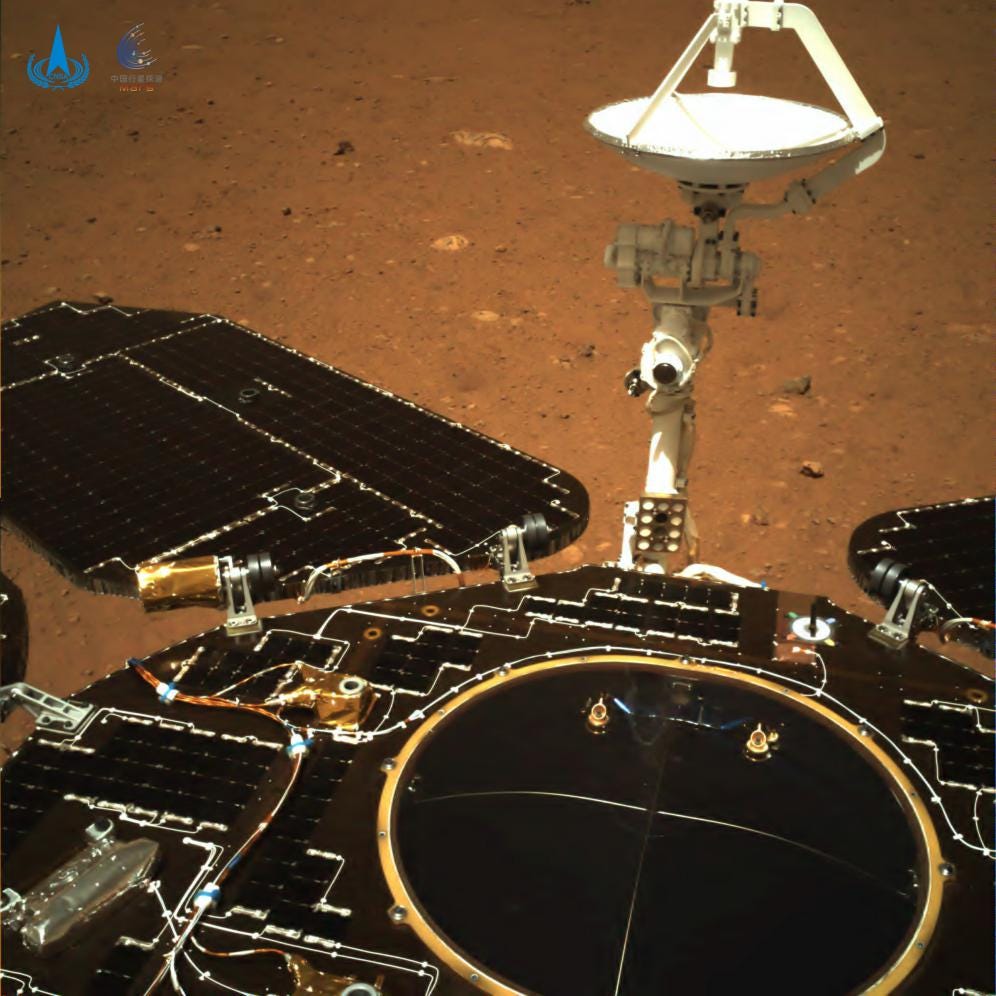Welcome back to Taikonautica, your regular dose of the Chinese space industry. If you haven’t subscribed yet, sign up here. Regularly updated news is kept at the Taikonautica Chronicle.
If you like what you’ve been reading, please forward to your friends!
Plus, for a concise daily update of the worldwide space industry, head over to the Spaceleaks newsletter.
This week: The Zhurong rover begins exploring Mars, new satellite regulations are out, and Galactic Energy eyes the international market.
Source: CNSA
Zhurong Leaves the Nest
Behold — the first non-American photographs from the surface of Mars:
Source: CNSA
The lander containing the Zhurong rover detached from the Tianwen 1 spacecraft and made a soft landing on the surface of Mars on May 15. Zhùróng (祝融), pronounced Joo rong, is named after a Chinese god of war.
Definitions, definitions
The success of Tianwen 1 is the first time a nation has successfully reached Mars on its first try and also the first time a nation has made its first successful mission as a landing (instead of a flyby or an orbiter). It also makes China only the second country in world history to complete a landing on Mars.
Now, everything I just said is true, in a way, but each claim also deserves its own giant asterisk. It all depends on how you define things.
For example:
The question of what counts as China’s first Mars mission is a bit tricky. Tianwen 1 is certainly China’s first solo Mars mission. It was preceded by an orbiter called Yinghuo 1, which was to hitch a ride along with a Russian mission called Fobos Grunt. Sadly, that mission was a failure, crashing back into Earth in early 2012.
The Soviet Union had several failed attempts at landing on Mars. The closest they got was Mars 3, which only transmitted for 20 seconds before Earth lost contact with it.
The Beagle 2 was a British Mars lander that was launched along with ESA’s Mars Express orbiter mission. It landed on Mars in 2003 but was never in communication with Earth after it deployed from Mars Express.
Mars Rover Comparisons
Source: NASA, probably (I can’t find the original; found this one on Reddit)
Size wise, Zhurong is similar to NASA’s Spirit and Opportunity rovers (which touched down in 2004), albeit slightly larger. Curiosity and Perseverance are still the largest rovers that have travelled across the Martian surface.
In terms of technology, though, Zhurong is more advanced in some ways than Spirit and Opportunity, for example being equipped with a laser that’s similar to the SuperCam on Perseverance that’s used for analyzing rocks.
So, if you want to view everything in terms of a space race between China and the US, the glass can be both half empty and half full.
Depending on your perspective, China is only now capable of accomplishing a feat similar to what the US did over 15 years ago, or China’s space program is nipping at NASA’s heels.
The truth is that it’s a bit of both.
News Roundup
May 21: Earth-observation data company Four Squares Technology signed a cooperation agreement (link in Chinese) with Nanhua Futures to explore using Earth-observation data for finance and insurance.
May 19: SASTIND, the State Administration of Science, Technology and Industry for National Defense, published the “Notice on Promoting the Orderly Development of Microsatellites and Strengthening Safety Management” (link in Chinese).
Here’s a good thread on the relevance to China’s answer to Starlink (note though that DFH calls it SatNet, but as far as I know an official English name is still tbd):


May 19: The Haiyang 2D oceanographic satellite was launched from Jiuquan on a Long March 4B.
Approx. May 17: Rocket maker XAPT, Xi'an Zhongke Aerospace Power Technology Co., Ltd. (西安中科宇航动力技术有限公司) completed a test (link in Chinese) of Xuanyuan 1, a 20-ton liquid oxygen kerosene rocket engine. XAPT is a spinoff of CAS Space, also known as Zhongke Aerospace, itself a spinoff of the Chinese Academy of Sciences.
May 12: Galactic Energy (星河动力) signed a strategic cooperation agreement with CASIC subsidiary China Huateng Industry Co., Ltd. (中国华腾工业有限公司), also known as China Volant Industry Co. or VOLINCO, to market Galactic Energy’s Ceres 1 rocket overseas (additional source in Chinese).
Galactic Energy plans to be the first private Chinese company to launch a foreign payload in 2022, albeit mediated by an SOE. VOLINCO serves as the international arm of state-owned CASIC, much the same way that CGWIC, the China Great Wall Industry Corporation, does for CASC.
Upcoming
May 27: Euroconsult is putting on a webinar — China satellite manufacturing chain: opportunities & trends at 8AM EST.
Until next time
My name is Cory Fitz and I write the Taikonautica newsletter. To make you smarter about China’s rapidly evolving space industry, Taikonautica brings you translations of Chinese-language articles, as well as a roundup of links and news.
If you have any questions, comments, or corrections, tweet at me at @cory_fitz or email me at cory@taikonautica.com.








Awesome analysis. Thanks for this :)